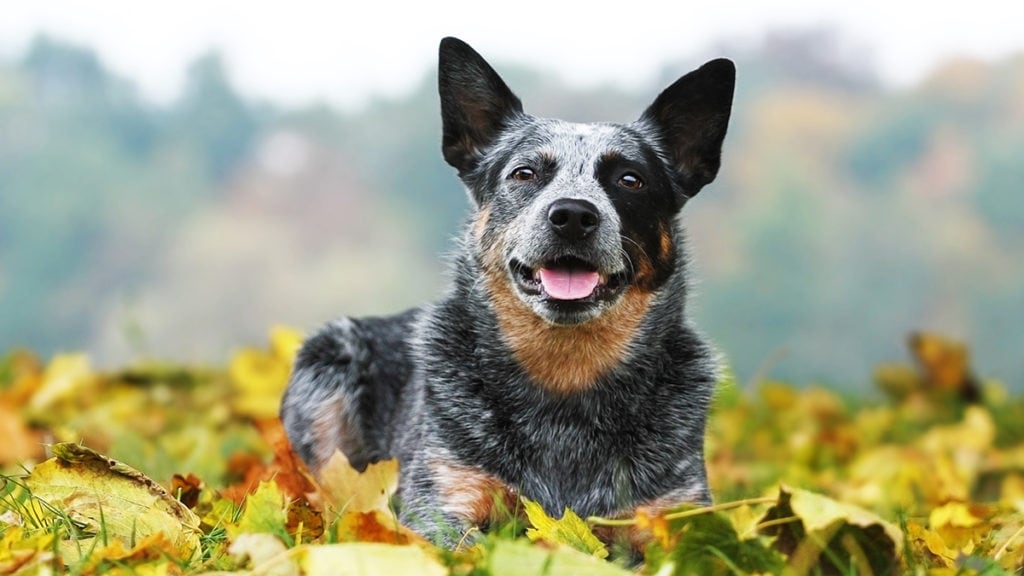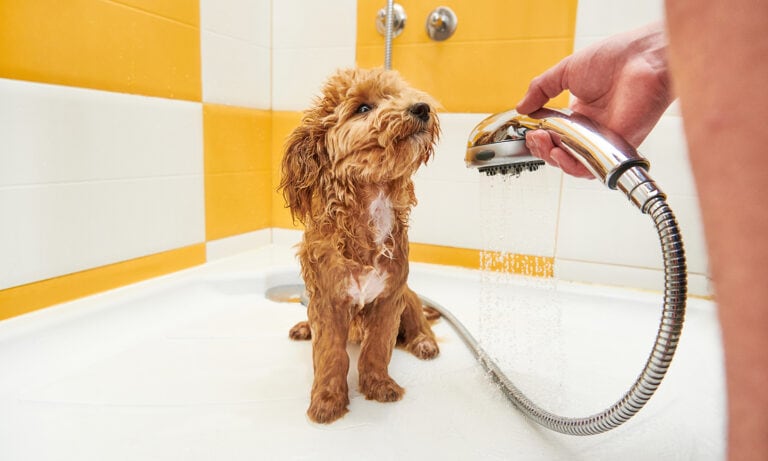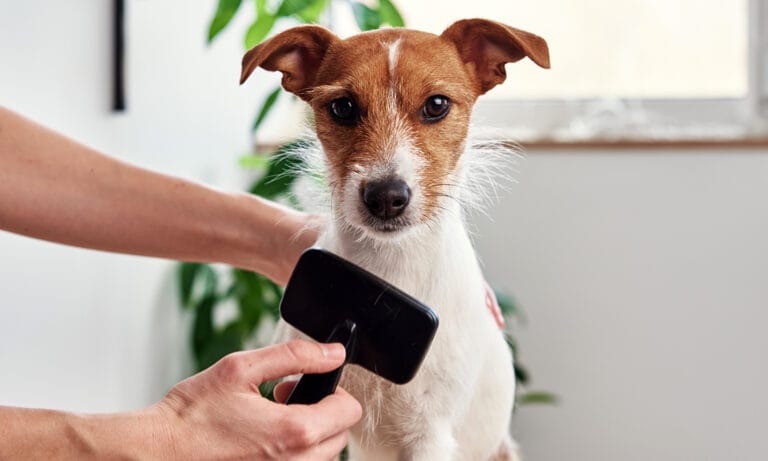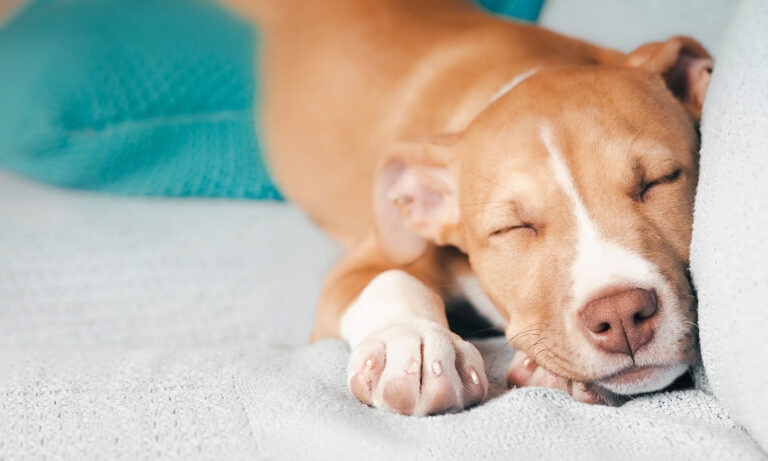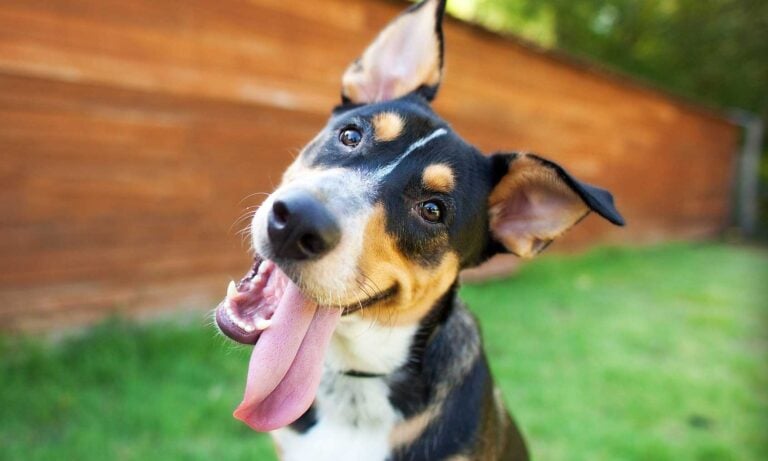If you’re looking for an intelligent, energetic canine companion, you might seriously consider a Blue Heeler. These herding dogs are officially known as Australian Cattle dogs, and have been praised for their loyalty and smarts, whether they’re tending livestock on a farm or playing catch in your backyard.
So is this breed right for you? Here are some important facts you need to know.
What Is a Blue Heeler?
As you might have guessed, Australian Cattle dogs originated Down Under in the 1840s, when a native Queenslander started breeding blue merle collies with Dingoes. The pups proved to be such good working dogs that their fame spread—and litters were snapped up by nearby cattle farmers. These dogs were also crossed with Dalmatians, which gave the Australian Cattle dog (which is also goes by the Queensland Heeler) a blue or red speckled appearance. The blue speckled dogs, known as Blue Heelers, were the most popular.
There’s really not much difference between Blue Heelers and other Australian Cattle dogs, says Sherry MacLennan, president of the Australian Cattle Dog Club of America and a longtime breeder and owner. They have similar characteristics, physical and mental, and lifespans. The only real difference is that some Blue Heelers have docked tails.
Health-wise, both blue- and red-speckled cattle dogs have the same issues. Most cattle dogs can develop hip and elbow dysplasia, which are the main orthopedic problems these dogs face. Australian cattle dogs can also suffer from eye problems, in particular progressive retinal atrophy.
Blue Heeler Characteristics
Blue Heelers are medium-sized dogs. Full-grown, they stand approximately 17 to 20 inches tall, and ideally should weigh between 35 to 50 pounds. They live anywhere from 12 to 16 years, according to the American Kennel Club.
Australian Cattle dogs are double-coated, which means they have an undercoat beneath their smooth topcoat. “They have good weather-resistant coats and only need to be wiped off when dirty, with an occasional bath,” says MacLennan. “They do shed their undercoat twice a year and need to be brushed to keep the shedding of under control. A Furminator works great for this.”
Australian Cattle Dog Temperament
Blue Heelers are known as Velcro dogs, says MacLennan—they stick by your side and tend to bond with one person over the rest of the family. “They’re active and very smart, but they can be hard-headed and need supervision. They can also be protective of their person or property,” says MacLennan.
That sense of protection makes them excellent herders and watch dogs, but if they’re not challenged mentally or physically, those instincts can be channeled into trouble-making behaviors, like nipping or acting aggressively toward strangers.
So how do you keep a Blue Heeler stimulated? Give your pup a job! (And no, you don’t have a buy a flock of sheep.) Hide dog treats and tell your pooch to find ‘em. Scatter kibble around the house and make your pup work for his supper (and breakfast)—or stuff food into a Kong or puzzle bowl. Enroll your pet in an agility class, which tests smarts as well as physical ability. Obedience classes are also good for this.
In addition, you’ll need to go on long walks or hikes, and vary the route every day. Better still, lace up your sneakers and go for a run with your canine companion—every day.
Bones and toys that keep your Australian Cattle dog busy are another must, says MacLennan. And since most heelers love to play fetch, you could try this automatic ball launcher by iFetch. It shoots out mini tennis balls when you’re busy doing other things (like making dinner). Another plus: You can teach your savvy cattle dog how to put the ball back, which means your furry family member is giving his brain a workout along with his body.
If you’re a first-time dog parent, you can be a successful Australian Cattle dog owner, as long as you are willing to put in the time and energy to keep your fur ball happy.
Where to Find Australian Cattle Dogs
If you want to buy a pup, you can find a reputable breeder by going to the Australian Cattle Dog Club of America’s site. Is rescuing more your thing? Shelters are a possibility, but you can also find a dog by going to the Australian Cattle Dog Rescue Association. And no matter how you find your furever friend, proclaim your love for the breed by sticking this bone magnet by Imagine This on your fridge or car.
By: Linda Rodgers
Featured Image: Via iStock.com/Carmelka
Share:
